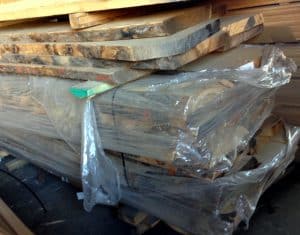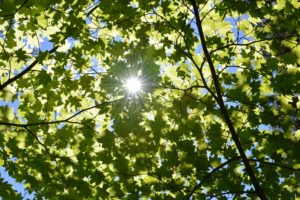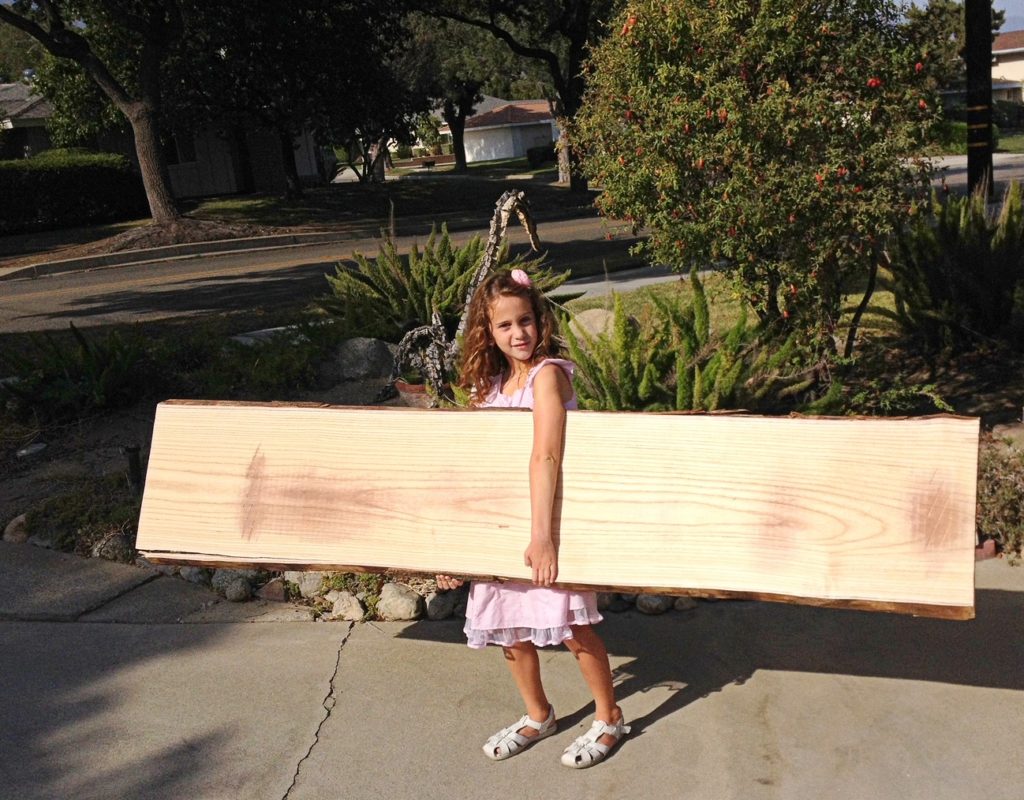Paulownia: the Ultimate Sustainable Hardwood Specie
Paulownia lumber has many amazing benefits sought after by sustainabilty advocates. With the growing emphasis on sustainability, more and more consumers are seeking eco-friendly alternatives in every aspect of their lives, including building materials. In this quest for sustainable options, Paulownia wood has emerged as a game-changer.
As one of the fastest-growing trees in the world, Paulownia offers numerous environmental benefits.
The exceptional growth rate of Paulownia trees means they can be harvested within a short span of time, making it a highly renewable resource.
Moreover, Paulownia wood is known for its lightweight characteristics, durability, and resistance to warp, which adds to its appeal as a sustainable choice for construction projects.
In addition to its remarkable sustainable properties, Paulownia wood is also aesthetically pleasing, with beautiful open grain and natural color.
It has gained popularity among architects, designers, and homeowners alike for its versatility in applications ranging from furniture to flooring.
If you are in search of a sustainable and attractive wood option, Paulownia wood deserves your attention. Join us on a deep dive into the unique sustainability of Paulownia wood.
Paulownia is the best option for eco-friendly sustainable hardwood manufacturing. Sustainable hardwoods come from forests which maintain a positive equilibrium of tree and plant biodiversity, either naturally or through responsible forest management,
Other names for this amazing wood are: Princess Tree, Royal Paulownia, Empresswood, or Kiri. This deciduous hardwood species is a member of the Paulowniaceae family.
In 20+ years as a hardwood lumber industry professional, I’ve heard many wood species promoted as green or environmentally friendly.
In my opinion, Paulownia sustainability is far superior to all other hardwoods & softwoods. In fact, I believe Paulownia may be the most sustainable resource the Earth has to offer.
What Are Sustainable Building Materials?
Sustainable materials are materials used throughout our consumer and industrial economy that can be produced in required volumes without depleting non-renewable resources and without disrupting the established steady-state equilibrium of the environment and key natural resource systems.
Source: Rutgers Center for Sustainable Materials
Generally speaking, sustainable construction materials, both wood and non-wood, share 3 significant characteristics.
- They lack toxic by-products
- They recycle easily and are reusable.
- They reproduce without depleting other less-sustainable resources.
Using this criteria, most wood species compare favorably to non-wood materials for eco-friendliness. Of course, the carbon footprint of wood is significantly lighter than concrete or steel.
Trees occur & replant naturally without human intervention. Even carelessly discarded wood biodegrades quickly.
However, paulownia has unique properties that enhance its sustainability. It is in many ways an uber-wood.
Here are 5 Reasons Why Paulownia is the World’s Most Sustainable Hardwood

#1 Paulownia Grows EXTREMELY Fast
This shade tree grows rapidly adding 15 feet each year to reach a mature height of 50 feet and width of 30 feet in just 10 years. It is considered one of the fastest growing trees in the world.
source: North Carolina State University
Paulownia wood grows primarily in the Southeastern United States, as far East as Texas and as far North As New Hampshire.
While Royal Empress tree growth rates depend on several factors, most paulownia trees grow between 10-15 feet per year, at least during early maturity.
Empress grows very fast compared to most other hardwood and softwood species. Faster regeneration, results in higher lumber yields.
Bamboo also grows fast, at a rate of up to 1 1/2 inches an hour! However, despite its woody stem and tree-like appearance, bamboo is a grass, not a tree.
#2 Paulownia Reproduces Very Quickly & Prolifically
Royal paulownia trees start bearing seed after 8 to 10 years and are very prolific (2). Each capsule contains up to 2,000 seeds, and a large tree may produce as many as 20 million seeds a year. The tiny, flat, winged seeds weigh about 0.17 mg (170,000 seeds/oz.). As the capsules break open on the trees throughout the winter and into spring, wind dissemination occurs easily (1).
source: United States Forest Services
Empress reproduces from seed. Sprouts appear randomly on the buds and upper part of the plant. Additionally, sprouting occurs regardless of whether or not the above-ground plant is alive.
 #3 Paulownia Helps Bees Pollinate
#3 Paulownia Helps Bees Pollinate
The blossoms of the Empress Splendor tree are highly “nectariferous” creating a much-needed source of nectar for pollinating insects including honeybees. It is estimated that one acre of Empress Splendor tree blossoms can generate enough nectar to produce 100 jars of honey per year.
source: WorldTree
 #4
#4
Special Photosynthesis Capabilities
The Paulownia spp. is one of the few species of tree that is characterized by the presence of a C4 photosynthesis pathway. These trees are involved in regulating the climate, absorbing significant amounts of carbon dioxide, and releasing a large amount of oxygen.
source: North Carolina State University
In layman’s terms, c4 photosynthesis is a hyper-efficient means of converting carbon to oxygen. C4 photosynthesis is typical of many plants & shrubs. However, Paulownia is one of the few trees possessing this unique ability!
 #5
#5
Locally Grown Paulownia Requires Less Transportation
The flow of wood in the calculator starts with logs delivered to a mill, or with secondary wood products
such as lumber and plywood that have been produced in a mill. If you input secondary wood products, the
emissions associated with creating those products from whole logs are estimated and added onto the
carbon footprint calculation
source: British Columbia Ministry of Forests, Lands and Natural Resource Operations
In short, being close to the resource means less transportation. Paulownia grown here in the United States does not cross the ocean on a container ship. It does not contribute to port congestion. Instead Paulownia lumber arrives our yard in Fontana, California efficiently packed on a flatbed or LTL van truck.




Pingback: CALCULATING BOARD FEET: All You Need To Know 2022 - * 2021 UPDATE
Pingback: Paulownia - Lumber - Wood - 8/4-2021
Pingback: Best Wood For Wands 2022 - Commercial Forest Products ?